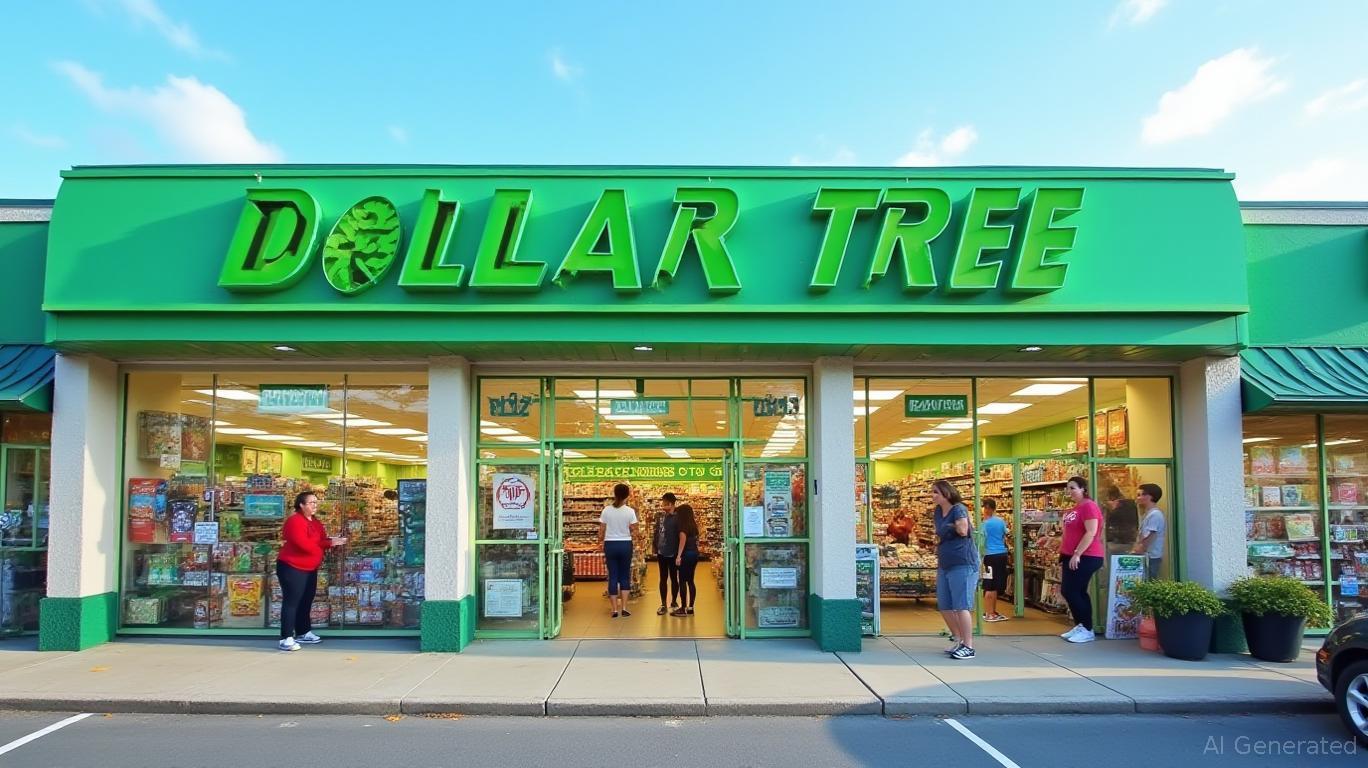Dollar Tree: Navigating Tariff Headwinds to Unlock Margin and Multiple Upside
Dollar Tree (NASDAQ: DLTR) has long been a poster child for value retailing, but recent earnings underscore its dual-edged reality: robust top-line growth contrasts with margin pressures exacerbated by inflation and supply chain costs. However, the company's strategic pivot—accelerating the sale of its Family Dollar division, coupled with disciplined capital allocation—is positioning it for a near-term valuation re-rating. With Truist Securities reaffirming a $100 price target and a confluence of catalysts on the horizon, DLTR presents a compelling risk-reward profile for investors willing to look past short-term noise.
The Earnings Crossroads: Growth Amid Margin Strains
In Q1 2025, Dollar Tree delivered on revenue and sales trends, with adjusted EPS of $1.26 and 11.3% revenue growth to $4.64 billion, both ahead of estimates. Same-store sales rose 5.4%, driven by a 2.5% traffic boost and 2.8% average ticket growth—testament to the enduring appeal of its $1.00 price point and expanded multi-price format. Yet, operating margin compressed 80 basis points to 8.4%, as rising distribution costs, shrink, and markdowns offset gains in freight efficiency. SG&A expenses swelled to 27.3% of revenue, reflecting higher wages and liability claims.
The immediate challenge is clear: margin contraction has clouded the narrative. However, management's guidance hints at stabilization. Full-year EPS was raised to $5.15–$5.65, fueled by $1.15 billion in net proceeds from the Family Dollar sale—set to close in Q2. This divestiture will not only eliminate transition costs ($0.30–$0.35 EPS drag) but also unlock $85–$90 million in tax-saving income. With $1.0 billion in cash and $519 million remaining in its $2.5 billion buyback authorization, Dollar Tree is primed to deleverage and boost shareholder returns.

Margin Stabilization: The Family Dollar Divestiture as a Catalyst
The Family Dollar sale is more than a balance sheet fix—it's a strategic de-risking move. By offloading a legacy business, Dollar Tree eliminates operational complexity and redirects resources toward its core $1.00 and multi-price formats. The net proceeds will fuel share buybacks, which historically have been a reliable EPS driver. Analysts at Truist note the stock's current P/E of 20x trades at a 5% discount to its five-year average, despite its strong cash flow and growth trajectory.
The margin outlook hinges on execution. Management's focus on reducing distribution costs, optimizing inventory, and scaling the multi-price 3.0 format (now in 3,500 stores) could reignite operating leverage. The 3.0 format, which offers a broader range of prices above $1, has already boosted average ticket sizes—a key lever for margin improvement. While Q2 EPS may dip 45–50% year-over-year due to Family Dollar transition costs, the post-sale environment could see margins rebound as early as 2026.
Valuation Upside: Multiple Expansion on the Horizon
Dollar Tree's current valuation is a puzzle. Despite a 20x P/E ratio, the stock trades at a 20% discount to its 19x forward multiple implied by Truist's $100 price target. This suggests investors are pricing in near-term margin pain but underappreciating the long-term tailwinds. Key catalysts include:
- De-risking Balance Sheet: The Family Dollar proceeds will reduce debt and supercharge buybacks, enhancing EPS and shareholder returns.
- Margin Stability: Post-sale, cost pressures should ease, allowing operating margins to recover toward historical norms (~9.5%).
- Multi-Price Growth: Expansion of the 3.0 format into 90% of stores by 2026 could drive sustained revenue and margin growth.
Analysts are taking notice. While CFRA holds at $92 (Hold), Truist's $100 target implies 12% upside from current levels, while Wells Fargo's $105 (Overweight) suggests even greater potential. The stock's $20.3 billion market cap and low debt profile also make it a takeover target—a possibility that's historically buoyed DLTR's valuation.
Risks and Near-Term Headwinds
No investment is without risks. Tariffs on Chinese imports and labor cost inflation remain threats, while Q2's EPS decline could pressure sentiment. However, Dollar Tree's pricing power—its ability to maintain traffic and average ticket growth despite rising costs—suggests resilience. Management's confidence in long-term strategies, paired with the Family Dollar windfall, provides a solid foundation to navigate these headwinds.
Conclusion: A Buying Opportunity in Disguise
Dollar Tree's current struggles are temporary, not structural. The Family Dollar sale removes a drag on margins and capital, while the multi-price strategy and share buybacks position the company for a valuation rebound. At $90, DLTR offers a 10–15% discount to its fair value, with upside catalysts aligned for 2025 and beyond.
Historical performance reinforces this outlook: a backtest of DLTR's returns following positive quarterly earnings surprises from 2020 to 2025 reveals strong returns with low risk, as measured by its maximum drawdown and a favorable Sharpe ratio. This underscores the stock's tendency to outperform in positive earnings environments, further justifying a strategic investment now.
For investors seeking a leveraged play on value retail's enduring appeal, now is the time to act—before the market catches up to Dollar Tree's true worth.

Comments
No comments yet